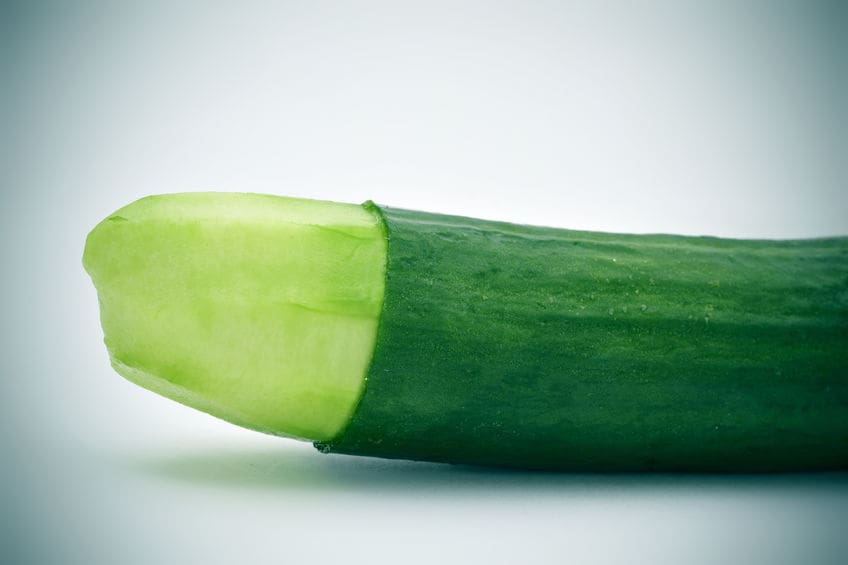
Minimally Invasive Circumcision
The Most Precise Technique with Minimal Tissue Damage
Microsurgical minimally invasive circumcision is a highly refined surgical method designed to minimize tissue trauma. This procedure utilizes an innovative local anesthesia technique that provides deep and long-lasting numbness around the penis and surrounding tissues, often lasting for several hours.During the surgery, only a thin layer of foreskin is removed, preserving most of the underlying subcutaneous tissue. This approach avoids injury to critical structures such as blood vessels and nerves, resulting in minimal bleeding and a significantly lower risk of complications.
The surgical incision is clean and well-aligned, promoting a smoother and more aesthetic healing process. Thanks to its precision and low-impact nature, this technique helps to reduce patient discomfort and accelerate recovery time.
Hospital-Grade Medical Equipment
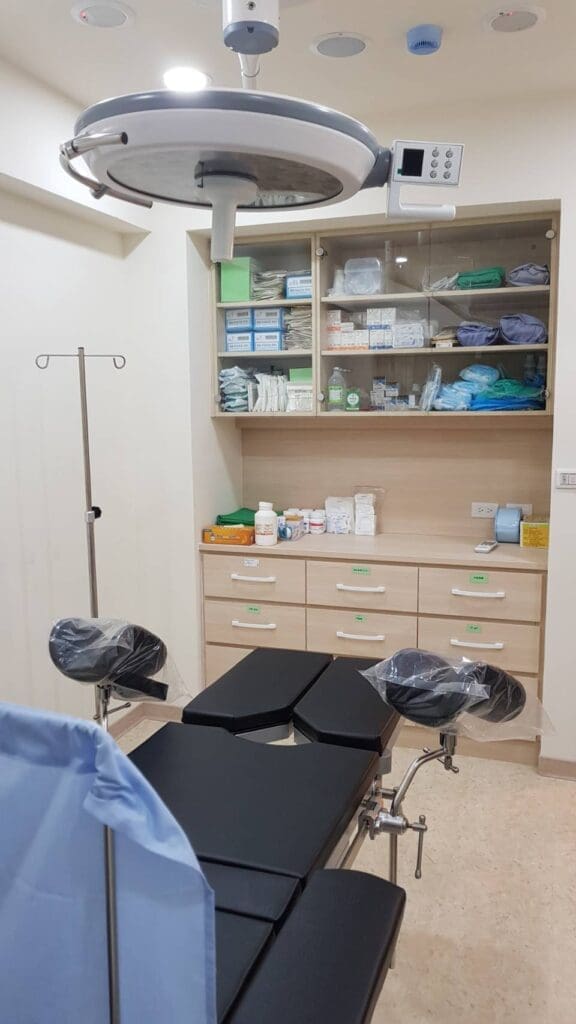
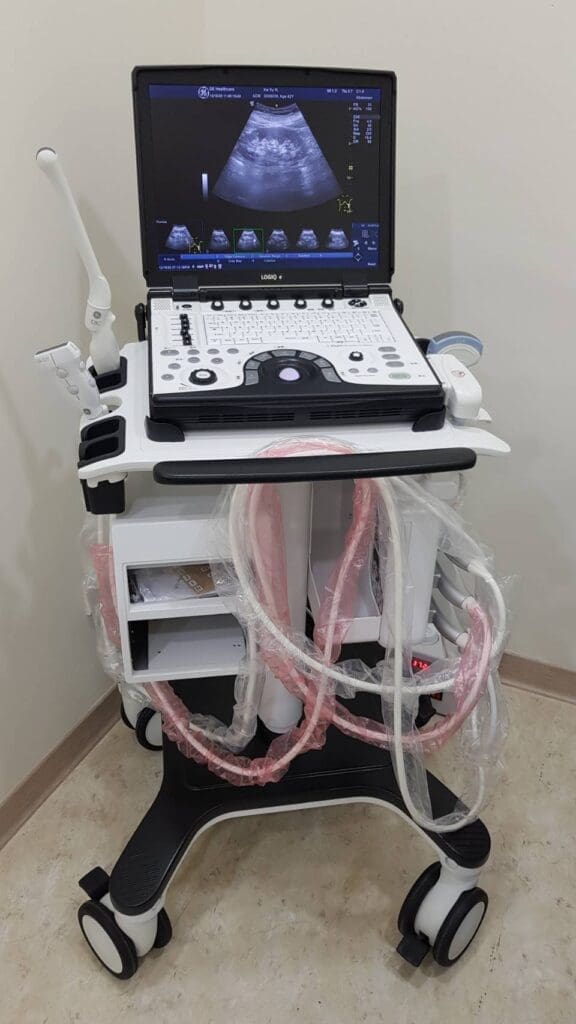
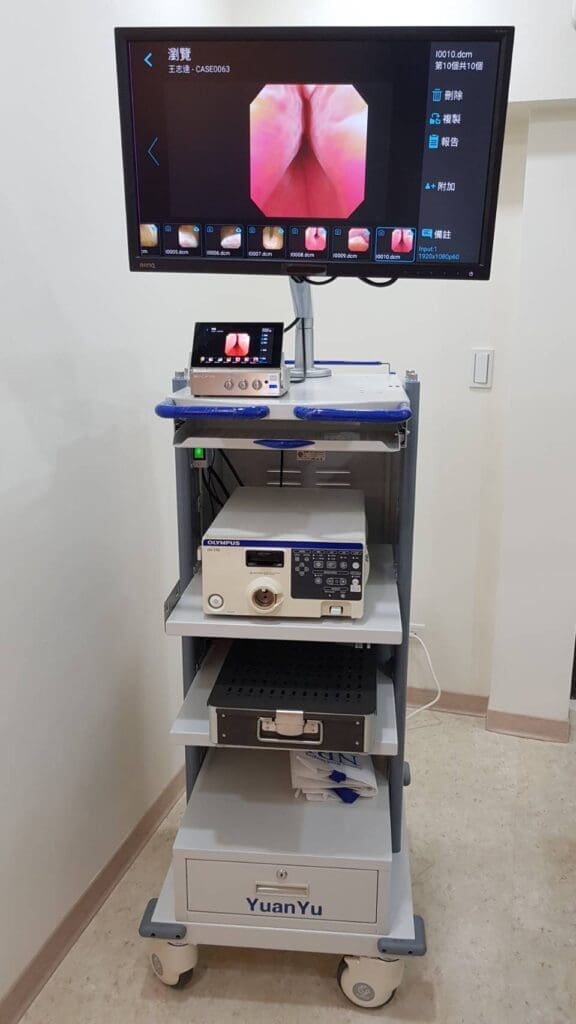
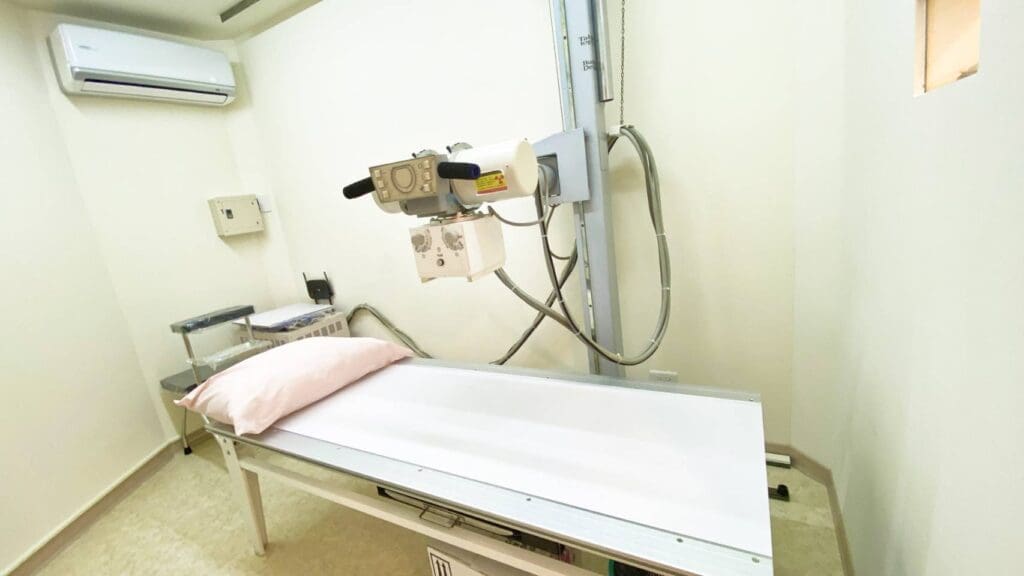
Comparison of Circumcision Techniques
| Technique | Microsurgical Circumcision | Stapler Circumcision | Traditional Circumcision |
|---|---|---|---|
| Anesthesia | Dual-local anesthesia (Duration: 3–6 hours) | Standard local anesthesia (Duration: 30–60 minutes) | Standard local anesthesia (Duration: 30–60 minutes) |
| Incision Shape | Oblique-oval | Circular | Oblique-oval |
| Tissue Damage | Minimal (no electrocautery used) | Moderate (removes foreskin + subdermal tissues) | Moderate |
| Pain Level | Well-tolerated | Well-tolerated | Well-tolerated |
| Surgery Time | 60–90 minutes | 20–30 minutes | 30–60 minutes |
| Overall Complication Rate | Low | Low | Higher |
| Wound Healing Time | ~1 week (Absorbable sutures fall off naturally, no staples) | ~2–3 weeks (Staples fall off in 14–21 days; remaining ones require manual removal) | ~1–2 weeks (Absorbable sutures fall off naturally, no staples) |
Why Choose Microsurgical Circumcision?
Microsurgical circumcision is an advanced technique derived from traditional circumcision and enhanced through the application of microsurgical principles (Ref. 1). Performed in the supine position, it uses a modern dual-local anesthesia method that deeply numbs the penis and surrounding areas (Ref. 2), with an effective anesthetic duration of 4–6 hours. Patients remain awake and pain-free during the procedure and may use a phone or Bluetooth headset.
Benefits of Microsurgical Circumcision
- Only a thin layer of foreskin is removed
- Maximum preservation of subcutaneous tissue
- Minimal bleeding, no electrocautery used
- Reduces risk of nerve or vascular damage
- Clean, precise incisions for faster healing and improved cosmetic outcomes
Due to the small size of the penis and the proximity of blood vessels and nerves, electrocautery may cause serious damage including:
- Sensory abnormalities
- Numbness
- Foreskin ischemia or necrosis
- Erectile dysfunction
Medical literature confirms that electrocautery can damage local tissues, reduce blood flow, and increase the risk of infection and delayed healing (Ref. 3).
Microsurgical circumcision avoids electrocautery completely, ensuring minimal trauma to nerves and vessels. This technique is used consistently across related surgeries we perform, such as:
- Penile prosthesis implantation
- Penile vein ligation
- Penile curvature correction

Key Features & Advantages
- Modern dual-local anesthesia prolongs numbness for up to 6 hours
- Single incision; no hospitalization needed
- Elliptical incision shape for better foreskin proportion
- No electrocautery — preserves surrounding tissue
- Microsurgical precision increases safety and reduces risk
- Smooth, neat wound closure for aesthetic healing
- Helps maintain local hygiene
- Reduces risk of balanitis and STDs
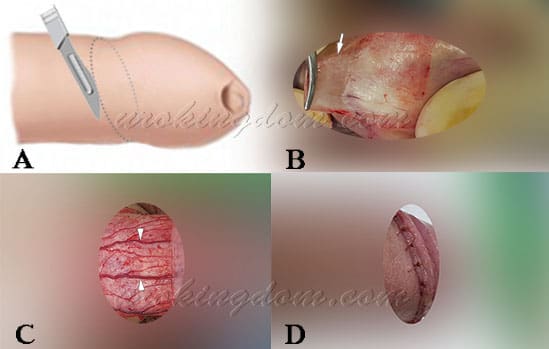
Surgical Technique Overview
The procedure begins with two shallow, parallel ring incisions made below the glans (Figures A & B):
- A superficial elliptical cut is made on the foreskin covering the glans (right-side view)
- The foreskin is retracted to expose the coronal sulcus, and a second shallow ring-shaped incision is made
- Using forceps, the foreskin between the two incisions is peeled away (Figure C), preserving all subdermal tissue and vessels
- If any minor bleeding occurs, no cautery is used — instead, absorbable fine sutures are used to tie off vessels
- Final wound closure is performed with absorbable micro-sutures (Figure D)
A: Elliptical incision made on foreskin above the glans
B: Second circular incision below the glans; tissue is gently peeled
C: Subcutaneous vessels preserved and visible; no bleeding
D: Wound sutured with fine absorbable threads; sutures naturally fall off within a week
Important Pre- and Post-Surgical Notes
- Active balanitis must be treated with medication prior to surgery
- Rare risk of local anesthetic allergy
- Pain is minimal during surgery due to prolonged anesthesia
- Post-op discomfort can be managed with anti-inflammatory medications
- Some discomfort from nocturnal erections may occur on the first night
- Most patients return to daily activities the next day
- No hospitalization required
- Avoid smoking and secondhand smoke to promote better wound healing
Microsurgical circumcision offers the highest safety, lowest complication rates, and best cosmetic results among all circumcision methods. Always consult a qualified surgeon to determine the best approach for your needs.
Circumcision Anastomosis & Traditional circumcision
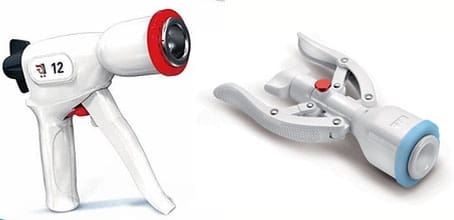
Circumcision Anastomosis
There are many different methods of circumcision, including traditional circumcision, laser circumcision, circumcision anastomosis (circumcision gun) (Figure 1), and the newer microcircumcision. Laser circumcision has the advantage of less bleeding because it stops bleeding at the same time as laser cutting; circumcision anastomosis has the advantage of simultaneous cutting and stapling and short operation time, but the cost is higher due to the fixed cost of the equipment.
Traditional circumcision
Using the traditional local anesthesia method, the foreskin is cut in two parallel circular wounds at an appropriate location below the coronal sulcus of the glans, and the foreskin and subcutaneous tissue between the two wounds are cut with the assistance of a scalpel. There are also many variations, such as the tug-and-chop method (Figure 2), which emphasizes its simplicity and speed.
Traditional circumcision does not place special emphasis on delicate surgery, which can easily injure the underlying tissues, blood vessels, and dorsal nerve plexus, resulting in postoperative complications such as wound bruising and swelling, poor healing, and penile numbness.
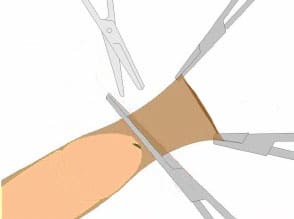
Possible Complications of Traditional Circumcision
- Bruising or swelling at the surgical site
- Wound infection or inflammation
- Poor wound healing
- Numbness in the penis
- Cold sensation in the glans
- Erectile dysfunction
- Urethrocutaneous fistula (abnormal connection between the urethra and skin)
- Excessive foreskin removal, causing tension or pain during erection or intercourse due to pulling on the scrotal or lower abdominal skin
- Increased sensitivity of the glans after surgery (typically resolves over time)
When Should Circumcision Be Considered?
- Recurrent balanitis or balanoposthitis (inflammation of the glans and foreskin), or frequent urinary tract infections at any age
- History of paraphimosis (foreskin trapped behind the glans)
- Narrow foreskin opening that prevents full retraction during erection
- Risk of tearing and bleeding during intercourse, especially if the partner has vaginal dryness
- Diabetic patients with poor peripheral circulation: foreskin may appear pale, cracked, swollen, and prone to chronic infection
- Presence of lesions such as genital warts (condyloma acuminata) on the foreskin
- Poor hygiene due to excessive foreskin, often associated with unpleasant odor
- Phimosis persisting beyond age 5 (as recommended by international guidelines)
- Prevention of sexually transmitted infections:
When Is Circumcision Not Necessary?
- Newborns usually do not need circumcision unless for cultural or religious reasons
- Penile abnormalities, such as hypospadias (foreskin may be needed for future reconstructive surgery)
- Steroid-responsive phimosis in children: if the foreskin can be retracted after topical treatment, surgery may not be needed
- Buried penis (hidden penis): the penis is normal in size but hidden under excess lower abdominal fat; dietary changes are often more helpful
- In cases of structural causes of buried penis, a reconstructive or cosmetic circumcision may be considered instead
參考文獻
- Geng-Long Hsu (許耕榕)、Cheng-Hsing Hsieh (謝政興). 書名:A LABORATORY MANUAL FOR POTENCY MICROSURGERY (性功能顯微手術實驗訓練手冊). 許耕榕、謝政興,編輯.
- Hsu GL, Hsieh CH (謝政興), Chen HS, Ling PY, Wen HS, Liu LJ, Chen CW, Chua C. The advancement of pure local anesthesia for penile surgeries: can an outpatient basis be sustainable (純粹局部麻醉施行陰莖手術的新進展)? Journal of Andrology. 28(1):200-205, 2007.
- Hsu GL, Hsieh CH (謝政興), Wen HS, Hsu WL, Chen YC, Chen RM, Chen SC, Hsieh JT. The effect of electrocoagulation on the sinusoids in the human penis (電燒對於人類陰莖海綿體的影響). Journal of Andrology. 25(6):954-9, 2004.
- Yang SSD, Hsieh CH (謝政興), Chang SJ. Effects of circumcision on urinary tract infection and sexually transmitted disease (包皮環切手術對於泌尿道感染和性傳染病的影響). Tzu Chi Medical Journal. 21(3):185-189, 2009.
Circumcision generally means that the foreskin encases the entire penis and glans, and the glans cannot be exposed naturally; however, when washing, the foreskin can usually be flipped over and removed to reveal the glans. Circumcision is different from circumcision. The foreskin is too tight in front of the foreskin, so the foreskin cannot be flipped over and removed to reveal the glans. Urine tends to accumulate in the foreskin cavity during urination, causing the foreskin to expand like a ballooning. Recent studies have shown that circumcision can reduce the risk of acquiring sexually transmitted diseases, including human immunodeficiency virus (HIV), human papillomavirus (HPV), herpes type 2 virus (type 2 HSV) and syphilis (syphilis).
